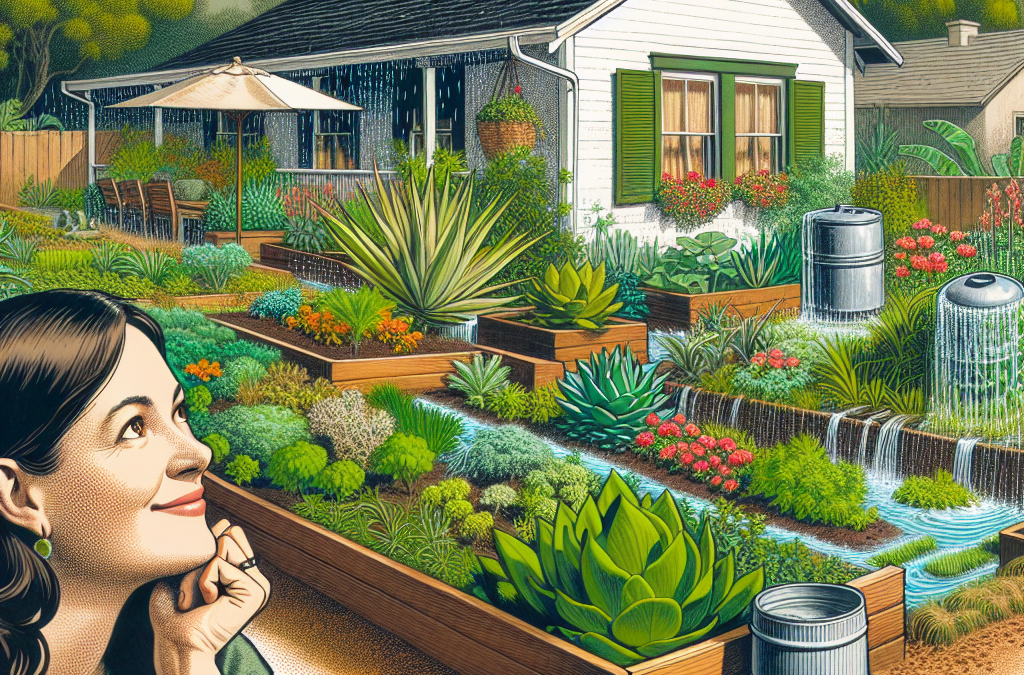Water Management
Controlling Rainwater Flow
One of the primary benefits I’ve discovered with establishing a rain garden on my homestead is its ability to control water flow. When it rains, like most folks, I used to see water pooling in my yard, which is never good for the soil or plants. By creating a rain garden, I’ve managed to redirect that flow effectively.
It’s fascinating how nature works, and the rain garden mimics natural ecosystems by slowing down water runoff. This not only helps prevent erosion but also restores groundwater levels. I’ve also noticed that my garden flourishes because the plants within the rain garden are getting a steady supply of water without being waterlogged.
For anyone looking to improve their landscaping while assisting with water management, I can wholeheartedly recommend building a rain garden. It’s a bit of work upfront, but the long-term benefits are totally worth it!
Pollinator Habitat
Creating a Buzzing Paradise
Another perk of having a rain garden that I wasn’t initially aware of is its role in supporting pollinators. By choosing the right mix of native plants for my rain garden, I’ve inadvertently created a buzzing paradise for bees, butterflies, and birds.
Not only does this biodiversity help the ecosystem, but it’s also a treat to watch! Having these busy little creatures flying around adds life to my homestead, and it’s rewarding to think I’m contributing to pollinator conservation.
For anyone considering a rain garden, I highly recommend incorporating flowers that attract these important species. It’s amazing how a simple garden can create such a vibrant ecosystem!
Improved Soil Quality
Enriching the Ground Beneath Us
Over time, I’ve learned that the soil quality on the homestead can be quite erratic due to various factors. However, my rain garden has vastly improved the soil quality in its area. With the continuous influx of rainwater filtered through its layers, the nutrients are naturally replenished.
Furthermore, the plants I’ve chosen are specifically beneficial for soil health. They bring in organic matter which enriches the topsoil while reducing erosion that can lead to nutrient loss. It’s like I’ve created my own little ecosystem that works in my favor!
For those wanting to enhance their gardening or farming efforts, establishing a rain garden is a natural way to boost soil quality without any harsh chemicals.
Native Plant Preservation
Keeping Flora Close to Home
One thing I’ve become really passionate about is the importance of native plants. With my rain garden, I was able to incorporate a variety of them, which has helped preserve some of the local flora. It feels great to know I’m planting species that are already well adapted to the local climate and soil, promoting biodiversity.
When I selected plants for my rain garden, I made sure to choose local varieties. This not only reduces the need for extra watering but also provides habitats for local wildlife. It’s been a joy to learn about the different plants and their roles in the ecosystem!
If you’re keen on supporting your local environment, planting a rain garden with native species is a fantastic way to do so. Plus, your area will look lush and beautiful!
Landscape Aesthetics
Beautifying My Homestead
Let me just say, one of the most rewarding aspects of my rain garden is how it enhances landscape aesthetics. It transforms a previously dull area into a vibrant spot brimming with color and life. Every season brings new blooms, and I can’t get enough of it!
The diverse range of textures and colors from the plants I selected can really make a boring yard come alive. Not to mention, it’s a conversation starter with neighbors who often stop by to admire it!
If someone is looking to beautify their homestead while working with nature rather than against it, a rain garden is a fabulous solution. It’s a bit like natural art that grows and flourishes with each passing season!
FAQ
- What is a rain garden? A rain garden is a planted depression that allows rainwater runoff to be absorbed into the ground, reducing erosion and improving water quality.
- How does a rain garden help with stormwater management? It collects rainwater, allowing it to seep into the ground rather than flowing directly into storm drains, which helps manage flooding and erosion.
- What types of plants are best for a rain garden? Native plants are ideal for rain gardens as they are adapted to the local climate and soil conditions, helping to create a healthy ecosystem.
- Do I need to do a lot of maintenance for a rain garden? While some maintenance is needed, especially weeding and occasional watering during dry spells, rain gardens generally require less effort than traditional gardens once established.
- Can I create a rain garden in any yard? Most yards can accommodate a rain garden as long as there is proper drainage and sun exposure, but it’s best to consult resources specific to your local area.





